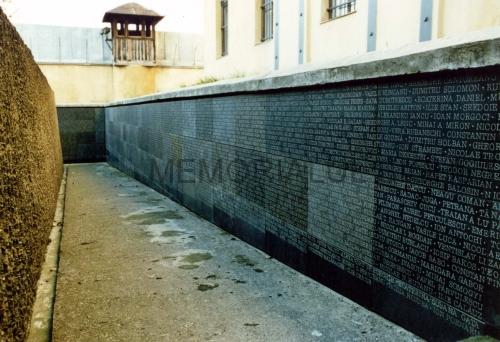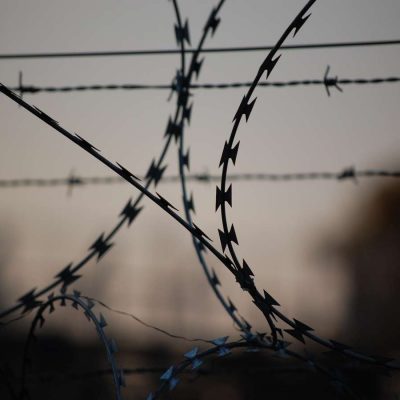Publishes news bulletins, guides and room books, as well as ten important collections of contemporary history:
- Sighet Annals
- Sighet Library
- Documents
- Interval
- Oral history
- The hour of history
- Daily life
- Multimedia
- Commemoration
- Besides the collections
- Guides, brochures, catalogues
Under the management of Romulus Rusan over 44.000 pages have been published and they entered into the library and bibliographies of recent history.
HOW I BECAME AN EDITOR
Analele Sighet (Sighet Annals) is the first and undoubtedly the most discerning and original collection that the International Centre for Studies into Communism edited during those troubled years at the very beginning, when the Sighet Memorial was only being established, looking to settle in the prison’s building, which was under reconstruction. We were four-five people on the organizing team, in contrast to the numerous participants who attended the annual symposia (between 200 and 300, let alone the hundreds of people in the audience, who arrived unannounced from all directions). Covering the 650 kilometres from Bucharest meant travelling via rented buses or overfilled trains for which additional wagons had to be obtained directly from the Ministry of Transportation. We ordered special buses and took care of the visa arrangements for those travelling from Chișinău or Cernăuți. Guests coming from England, France, Germany, Poland, the Czech Republic, Slovakia, Norway and so many other countries had to be welcomed at the airport and were then driven to Bucharest’s North Railway Station, from where they continued their voyage by train for 12-13 hours to Sighet. Newcomers crowded in the hotel, which was always undergoing repairs, in the city centre, three or four people in one room. The Memorial’s conference room was still under construction, so we rented one or even two rooms in the city. The speaking time was limited to ten minutes to allow all registered participants to take the floor during the 2 or 3 days of the symposia. The microphone was guarded by two yellow lamps, which would go on ten seconds before the sound was cut off. Those who ignored this time allocation system were interrupted by the moderator, who asked for their manuscript to have it published entirely. However, authors would often send their final, revised and extended papers weeks or even several months later, which made the editor’s work very challenging. How do we explain the fact that so many people were extraordinarily drawn to Sighet? Romania – a country they knew nothing about expect for that it had gone through a televised revolution, but also through a bloody mineriad – was in itself an attraction for foreigners. At the same time, there was still no programme in Romania meant to reconstruct recent history. Hundreds of people came to Sighet as if they were on a pilgrimage to a sacred site. They were former political prisoners, former deportees, historians and scholars who had themselves gone through hard times and prison, diligent students and young people without access to the archives, but with an inner drive to gain access to them, which no longer exists today; and finally, historians coming from neighbouring or Western countries. Some were storytellers, other researchers. Some carried encouraging messages from great personalities of the world, others were accompanied by alumni who were as passionate as ours. Their names are all included in an enclosed list. As one can see, they weren’t few in number for the ten years in which the symposia were organized.
Over a decade, ten volumes, each bearing a number and a title, resulted from the transcription of these symposia. Covering three-four hundred pages at the beginning, then more, and then many more, as we were approaching the present and the history of daily life was fresher in our memory. In the end, in 2003, we had reached a total number of 7388 pages, and many congratulated us for having created a true compendium, like an atoll of remembrance in a sea of forgetfulness. It is true that the archives were meanwhile beginning to open, and the confessional part of the books was increasingly better armed with complementary documents. These ten volumes are the pillars that gave the museum, and implicitly the Sighet Memorial, strength and duration. Remembering them over the years will show us where we came from and where we are now. I particularly insisted on how one of the collections was brought about – namely Sighet Annals – because it crystallises the way in which the Memorial was born and grew over the years. A sort of pathetic effort was perpetuated through the creation of a data base, the gathering of never before published documents, the publication of books, and, at the same time, the development of the sixty exhibition rooms. I met hundreds of people at the symposia, they shared their stories with me; their coming together brought about summaries, the summaries led to conclusions. We worked on a second important collection: Biblioteca Sighet (The Sighet Library), based on their suggestions and collaborations, our dear known and, more often than not, unknown guests who got in contact with us, shared their ideas, manuscripts, reference books. We were somehow ‘marked’, some professional historians avoided us under the pretext of their own academic endeavours (braver than civilians were the members of the military, who sent everything they had unwillingly saved during the time of Communist censorship for publication). Professors Alexandru Zub and Șerban Papacostea – former political detainees in the 1950s, who were for a long time denied the right to teach – protected us and recommended us to their fellow colleagues and students. Young people found in us a sense of freedom, which was somewhat constrained by work plans and official rigour in traditional institutions. Young historians – at first Dennis Deletant, then Stéphane Courtois, Thierry Wolton, Tom S. Blanton, Helmut Müller-Enbergs –, and then the dissident Vladimir Bukovski entrusted us with their most important works to have them translated into Romanian. From here on, a circle of collaboration emerged: for the Romanian edition of Cartea neagră a comunismului (The Black Book of Communism), we contributed with an extensive Addenda, which was later translated into French, German, Italian and other languages. All of us together initiated another new collection, Documente (Documents). The studies, political reports, memoirs, monographs from The Sighet Library now came together on the same shelf with documents, which had managed to escape the untold, but real censorship of the archives. The forth collection, Istoria orală (Oral History), the most productive one for that matter, began to epically and thematically build upon the thousands of hours of recordings from the early years, as well as the conferences and charmingly innocent debates between teachers and pupils at the summer schools, initiated in 1998. The thousands of transcribed pages have now given rise to an editorial series unique in its kind, which will last for a long time to come, Recviem pentru țăranul român (Requiem for the Romanian Peasant): the war that thousands of people fought to protect their property and independence, and symbolically won, however losing their identity in the end. Especially created for a young audience, the collection Ora de istorie (The History Class) was born from our concern that the instructional quality of history classes had declined from one year to another, as the curriculum deteriorated, imposing unbearably sterile textbooks. While in 1998-2000 we published books written entirely by adolescents (answers given in the entrance examination for the Summer School – See Exerciții de memorie [Memory Exercises], Exerciții de speranță [Hope Exercises] and others), over the years, the level of general knowledge of schoolchildren dropped dramatically due to the degradation of educational curricula. Based on chronologies and short, but insightful texts, The History Class provides young people today with a minimum amount of knowledge in terms of recent history (which is sometimes welcomed for parents alike). We shouldn’t forget about the less extensive collections, Interval (Interval), Viața cotidiană (Daily Life), Comemorări (Commemorations), Multimedia (Multimedia), and even less so about the numerous books outside the collections under the signature of distinguished individuals – Corneliu Coposu, Dennis Deletant (a history of Romanian Communism in 4 editions), Vladimir Bukovski (an autobiographical novel), Aurelian Bentoiu (memoirs and verses), Cicerone Ionițoiu, Gheorghe Leahu, Constantin Ionașcu, Florin Constantin Pavlovici – or monographing mass movements such as the Civic Alliance in the 1990s. The masterpiece of this section is the monumental tome Cartea Morților (The Book of Dead, 880 pages), the first list of tens of thousands of human sacrifices in the post-war period, along with a thorough introductive study. Going over the more than 110 titles of the Centre for Studies into Communism (over 44,000 pages have seen the light of day thanks to a handful of young historians) makes one realize that not only a museum was born from the magma of earlier symposia held under the sign austerity, but also a school of historical thought reserved to the most frustrated fellow countrymen, young people whose conscience of national identity will wither in time. The museum itself was designed as a textbook and each of its rooms looks like a history page written on walls drenched in suffering. Visits of groups of schoolchildren (during holidays or Școala altfel [Another Kind of School], they come in incredible numbers: 1,300 in a day) inspires in us the idea that histories, be they good or bad, can be born every day, in each child.
Romulus Rusan
DIRECTOR OF THE INTERNATIONAL CENTRE FOR STUDIES INTO COMMUNISM
Bucharest, March 2016



